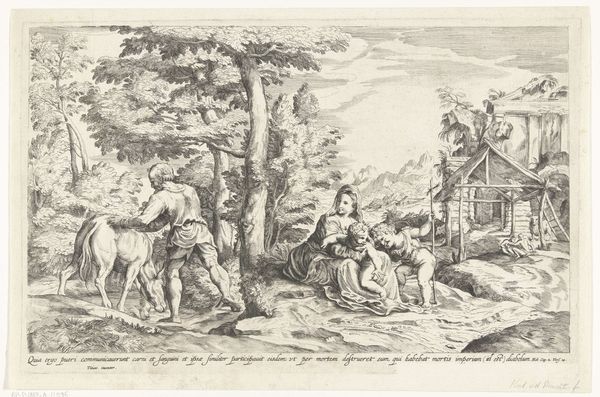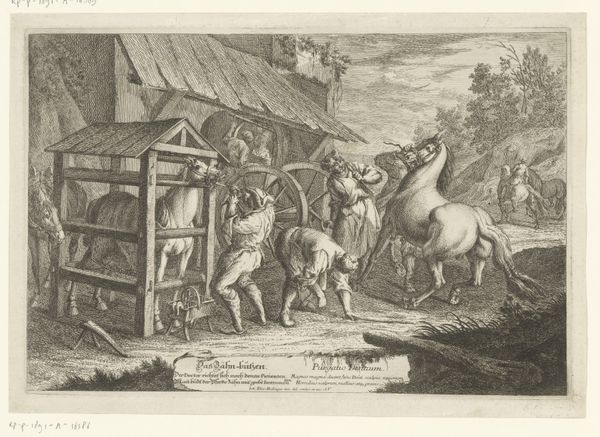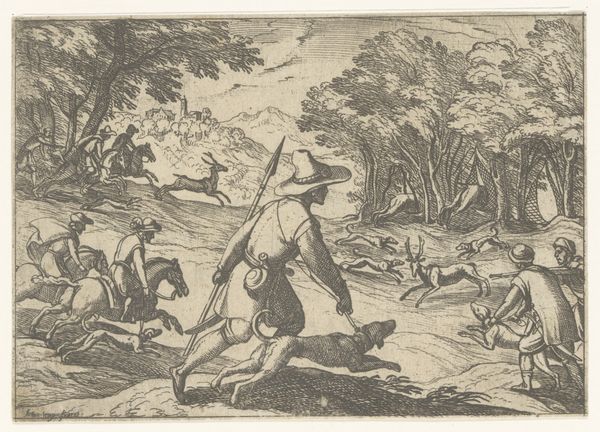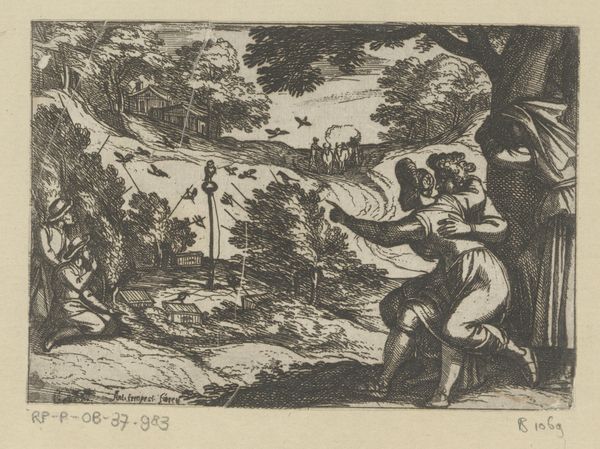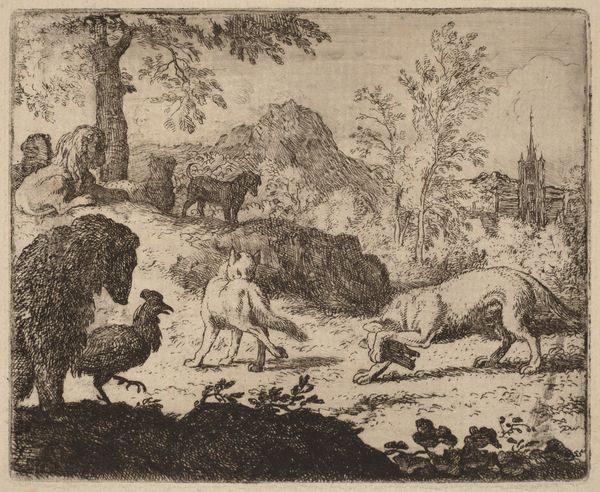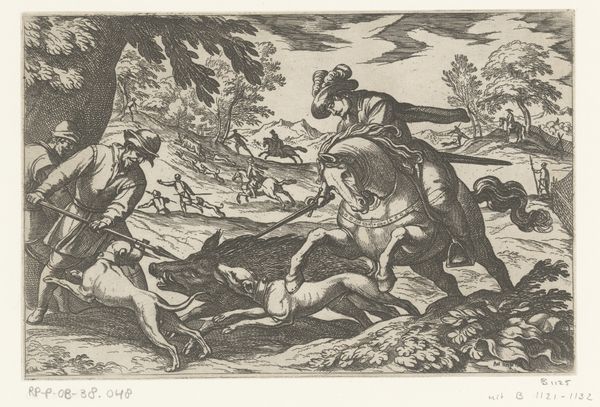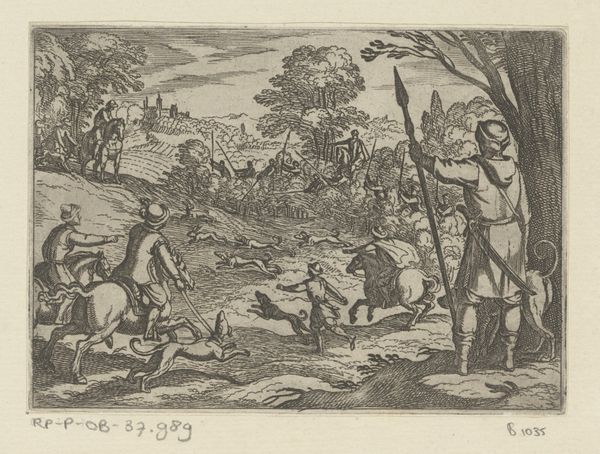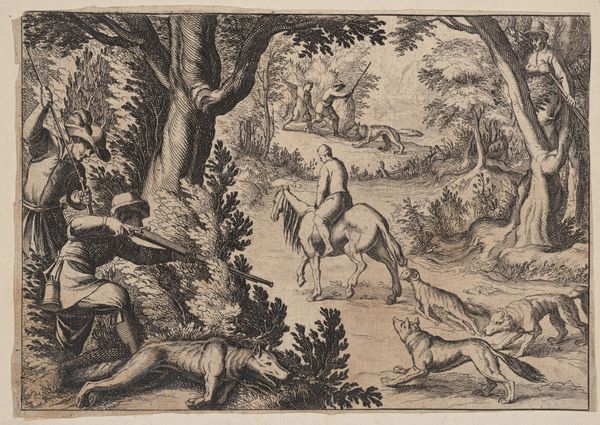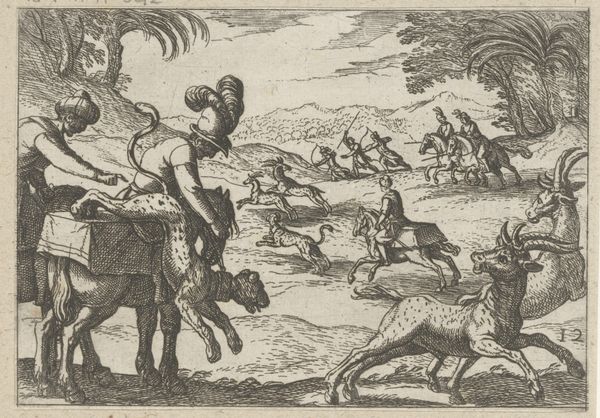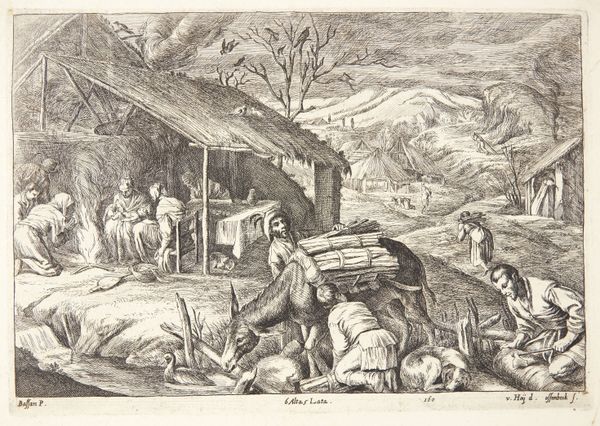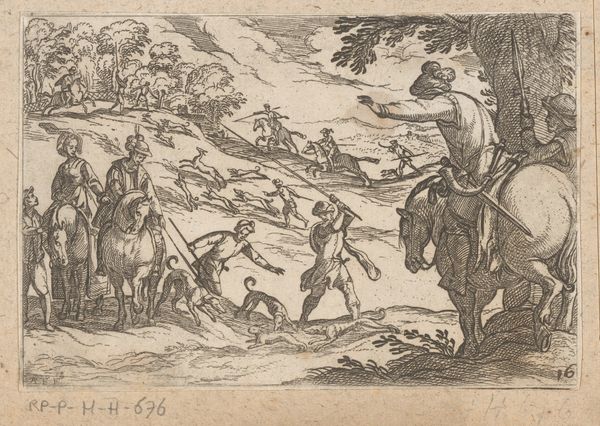
The Cat Climbs a Barn from Hendrick van Alcmar's Renard The Fox 1650 - 1675
0:00
0:00
drawing, print, engraving
#
drawing
#
dutch-golden-age
# print
#
landscape
#
figuration
#
line
#
genre-painting
#
engraving
Dimensions: Plate: 3 13/16 × 4 1/2 in. (9.7 × 11.4 cm) Sheet: 4 in. × 4 13/16 in. (10.2 × 12.2 cm)
Copyright: Public Domain
Curator: Hendrick van Alcmar’s Renard the Fox, with engravings by Allart van Everdingen dating back to the late 17th century, depicts a barn scene. It’s interesting to consider how the materials involved—the paper, the ink, and the copperplate—shaped the final artwork, wouldn’t you agree? Editor: Indeed, but the drama is also unmistakable. A wary fox stands center as a cat, in contrast, scales the weathered wood planks of a rustic barn. Curator: Yes, and it appears the texture has been achieved through meticulous engraving. Looking closely at the architecture and the animals in this representation, it’s impossible to ignore that it would have required painstaking labor by both artist and craftsman to produce. Editor: The figures of the fox and cat call to mind well-worn roles from fables and morality plays. Do you find that this representation evokes themes of cunning versus domesticity, of wildness versus safety? Curator: Potentially. But perhaps more pointedly, what does this say about production and the book trade at the time? Each print required specific techniques, pointing to division of labor. Think about the context in which this was circulating, this print becomes almost an artifact for consumer engagement. Editor: A provocative thought. Certainly, Everdingen's artistry and this particular scene offer fertile ground for the kind of symbol recognition and decoding one associates with cultural commentary. The fox itself, a character brimming with layered meanings! Curator: And if you analyze Everdingen’s role as designer of the prints for an already established narrative, it begs the question as to how he was being positioned to interpret the source material for potential buyers? Editor: Certainly, thinking about Everdingen's work this way provides a richer appreciation for both process and significance in artistic expression of that period. Curator: Precisely. It redefines art by emphasizing what goes into making and consuming the art in terms of historical exchange and market value, don't you think?
Comments
No comments
Be the first to comment and join the conversation on the ultimate creative platform.
